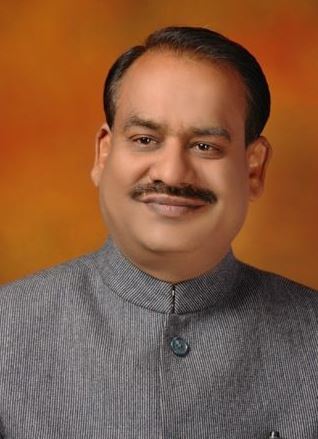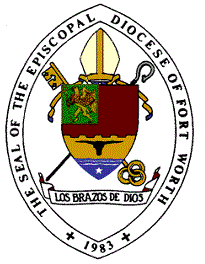Related Research Articles
An ecclesiastical court, also called court Christian or court spiritual, is any of certain courts having jurisdiction mainly in spiritual or religious matters. In the Middle Ages, these courts had much wider powers in many areas of Europe than before the development of nation states. They were experts in interpreting canon law, a basis of which was the Corpus Juris Civilis of Justinian, which is considered the source of the civil law legal tradition.
The General Convention is the primary governing and legislative body of the Episcopal Church in the United States of America. With the exception of the Bible, the Book of Common Prayer, and the Constitution and Canons, it is the ultimate authority in the Episcopal Church, being the bureaucratic facility through which the collegial function of the episcopate is exercised. General Convention comprises two houses: the House of Deputies and the House of Bishops. It meets regularly once every three years; however, the House of Bishops meets regularly in between sessions of General Convention. The Bishops have the right to call special meetings of General Convention.
A presiding bishop is an ecclesiastical position in some denominations of Christianity.

The speaker of the Lok Sabha is the presiding officer and the highest authority of the Lok Sabha, the lower house of the Parliament of India. The speaker is elected generally in the first meeting of the Lok Sabha following general elections. The speaker does not enjoy a security of tenure and his term is subjected to the pleasure of the house i.e. can be removed anytime by a resolution of the Lok Sabha by a majority of the all the then members of the house. The longest-serving speaker was Balram Jakhar, whose tenure lasted 9 years and 329 days.
The appointment of Church of England diocesan bishops follows a somewhat convoluted process, reflecting the church's traditional tendency towards compromise and over complex solutions, traditional ambiguity between hierarchy and democracy, and traditional role as a semi-autonomous state church.

The Anglican Diocese of Quincy is a member of the Anglican Church in North America and is made up of 32 congregations, principally in Illinois but also in Wisconsin, Minnesota, Texas, Iowa, Nebraska, Missouri, Hawai'i, Colorado, Tennessee, and Florida in the United States. The diocese was a founding member of the Anglican Church in North America in 2009.

The Episcopal Diocese of Pittsburgh is a diocese in the Episcopal Church in the United States of America. Geographically, it encompasses 11 counties in Western Pennsylvania. It was formed in 1865 by dividing the Episcopal Diocese of Pennsylvania. The diocesan cathedral is Trinity Cathedral in downtown Pittsburgh. The Rt. Rev. Ketlen A. Solak was consecrated and seated as its current bishop in autumn 2021.

The Episcopal Church of Cuba is a diocese of the Episcopal Church in the United States. The diocese consists of the entire country of Cuba. From 1966 to 2020, it was an extra-provincial diocese under the archbishop of Canterbury. As of 2021, it had nearly 1,600 members and an average worship attendance of more than 600 in forty-four parishes, including the Cathedral of the Holy Trinity in Havana.
In the United States, the history of the Episcopal Church has its origins in the Church of England, a church which stresses its continuity with the ancient Western church and claims to maintain apostolic succession. Its close links to the Crown led to its reorganization on an independent basis in the 1780s. In the nineteenth and early twentieth centuries, it was characterized sociologically by a disproportionately large number of high status Americans as well as English immigrants; for example, more than a quarter of all presidents of the United States have been Episcopalians. Although it was not among the leading participants of the abolitionist movement in the early 19th century, by the early 20th century its social engagement had increased to the point that it was an important participant in the Social Gospel movement, though it never provided much support for the Prohibitionist movement. Like other mainline churches in the United States, its membership decreased from the 1960s. This was also a period in which the church took a more open attitude on the role of women and toward homosexuality, while engaging in liturgical revision parallel to that of the Roman Catholic Church in the post Vatican II era.

The General Synod of the Anglican Church of Canada is the chief governing and legislative body of the Anglican Church of Canada (ACC), the sole Canadian representative of the Anglican Communion. The first General Synod session was held in Toronto in 1893, with the proviso that the parameters of its authority would not undermine the local independence of dioceses.
According to both Catholic and Anglican canon law, a cathedral chapter is a college of clerics (chapter) formed to advise a bishop and, in the case of a vacancy of the episcopal see in some countries, to govern the diocese during the vacancy. In the Catholic Church their creation is the purview of the Pope. They can be numbered, in which case they are provided with a fixed prebend, or unnumbered, in which case the bishop indicates the number of canons according to the rents. These chapters are made up of canons and other officers, while in the Church of England chapters now include a number of lay appointees.

Pamela Pauly Chinnis was the first woman to serve as president of the House of Deputies, one of two houses, with the House of Bishops, that makes up the General Convention of the Episcopal Church in the United States of America. She served three three-year terms, elected in 1991, 1994 and 1997.

The Episcopal Church, originally the Protestant Episcopal Church in the United States of America, is a member church of the worldwide Anglican Communion based in the United States with additional dioceses elsewhere. It is a mainline Protestant denomination and is divided into nine provinces. The presiding bishop of the Episcopal Church is Michael Bruce Curry, the first African American bishop to serve in that position. He will be succeeded by Sean Rowe in November 2024.

The Diocese of Quincy was a diocese of the Episcopal Church in western Illinois from 1877 to 2013. The cathedral seat was originally in Quincy, Illinois but was moved to St. Paul's Cathedral in Peoria in 1963. In order to avoid confusion with the Roman Catholic Diocese of Peoria, the diocese retained the name of the location of its original "home" city, Quincy, where its cathedral seat was St. John's.

The Episcopal Diocese of Fort Worth is a diocese of the Anglican Church in North America. The diocese comprises 56 congregations and its headquarters are in Fort Worth, Texas.

The Episcopal Diocese of South Carolina (EDOSC), known as The Episcopal Church in South Carolina from January 2013 until September 2019, is a diocese of the Episcopal Church. The diocese covers an area of 24 counties in the eastern part of the U.S. state of South Carolina. The see city is Charleston, home to Grace Church Cathedral and the diocesan headquarters. The western portion of the state forms the Episcopal Diocese of Upper South Carolina. As a diocese of the Episcopal Church, the Diocese of South Carolina is part of the worldwide Anglican Communion and traces its heritage to the beginnings of Christianity.
The Philadelphia Eleven are eleven women who were the first women ordained as priests in the Episcopal Church on July 29, 1974, two years before General Convention affirmed and explicitly authorized the ordination of women to the priesthood.

Daniel George Policarpio Gutiérrez is the 16th and current bishop of the Episcopal Diocese of Pennsylvania, the second oldest and fourth largest in the country. He was elected and consecrated in 2016, and previously served as Canon to the Ordinary in the Episcopal Diocese of the Rio Grande.
The Episcopal Diocese of South Carolina was established in 1785 as one of the nine original dioceses of the Episcopal Church in the United States. The diocese originally covered the entire state of South Carolina, but the western part of the state became the Episcopal Diocese of Upper South Carolina in 1922. In 2012, a controversy led to the existence of two rival dioceses, the Anglican Diocese of South Carolina and the Episcopal Diocese of South Carolina, each claiming to be the legitimate successor of the original diocese.

The Bureaus of the Cortes Generales are the governing bodies of each House of the Cortes Generales, the legislative branch of Spain. The Bureaus are made up of the President or Speaker of the House, the Vice Presidents or Deputy Speakers and the Secretaries. Each Bureau is regulated by the standing orders of its house.
References
- ↑ The Episcopal Church (2009), Constitution and Canons, Constitution Article I Section 4, p. 2.
- ↑ Title I Canon 1 Section 3, p. 20-21.
- ↑ Title I Canon 1 Section 1 (b), pp. 11–12.
- ↑ House of Deputies, , accessed July 11, 2022.
- ↑ Barnes, C. Rankin. "The General Convention Offices and Officers 1785–1950".
- ↑ "General Convention Virtual Binder". www.vbinder.net. Retrieved 2024-06-29.
- ↑ Title I Canon 1 Section 1 (a), p. 11.
- ↑ Title I Canon 1 Section 1 (c–i), pp. 12–13.
- ↑ Title I Canon 1 Section 1 (j), pp. 13.
- ↑ The Episcopal Church, Executive Officer and Secretary Archived 2011-01-06 at the Wayback Machine , accessed January 6, 2011.
- ↑ Constitution Article I Section 5, p. 2.